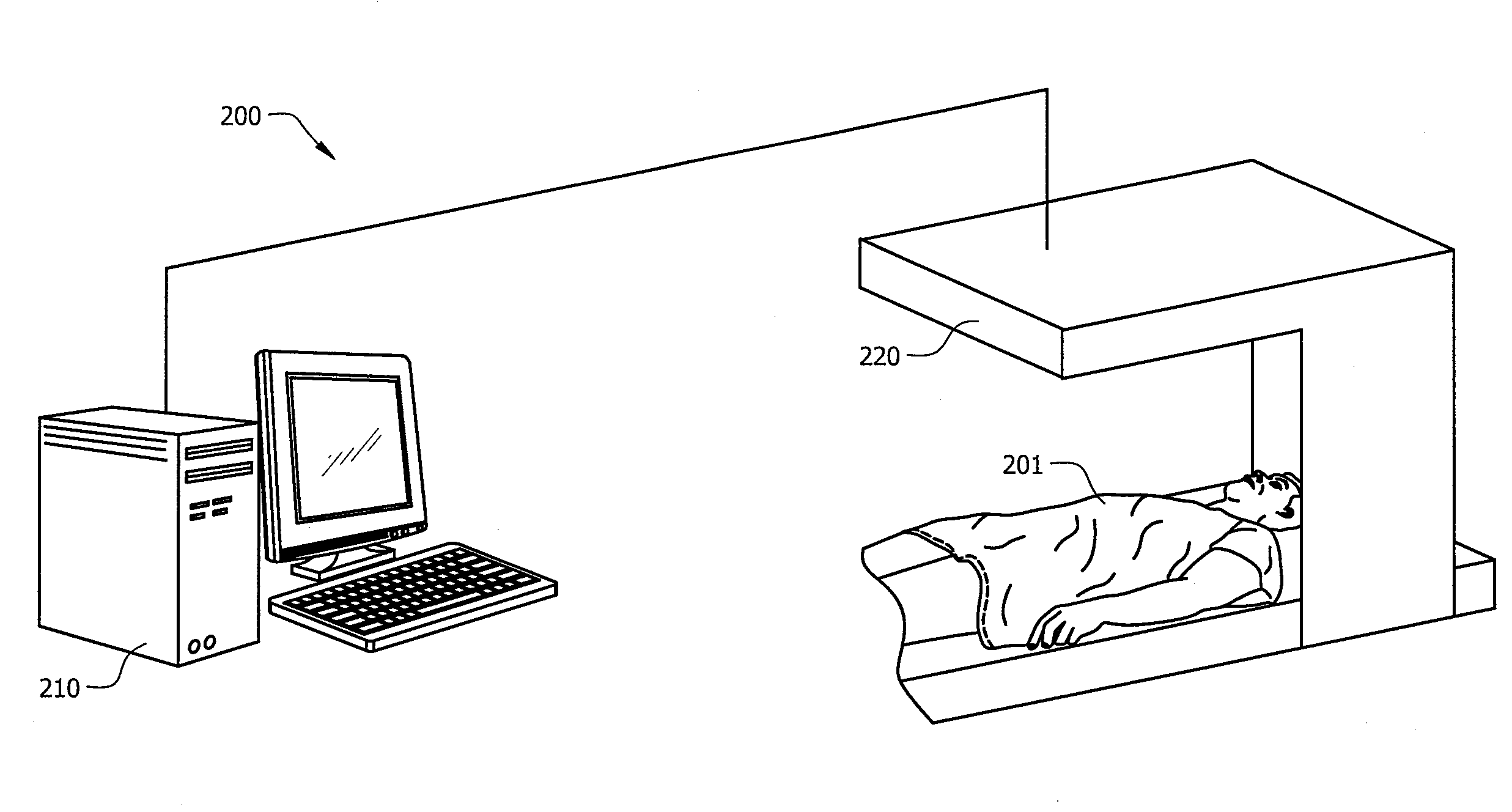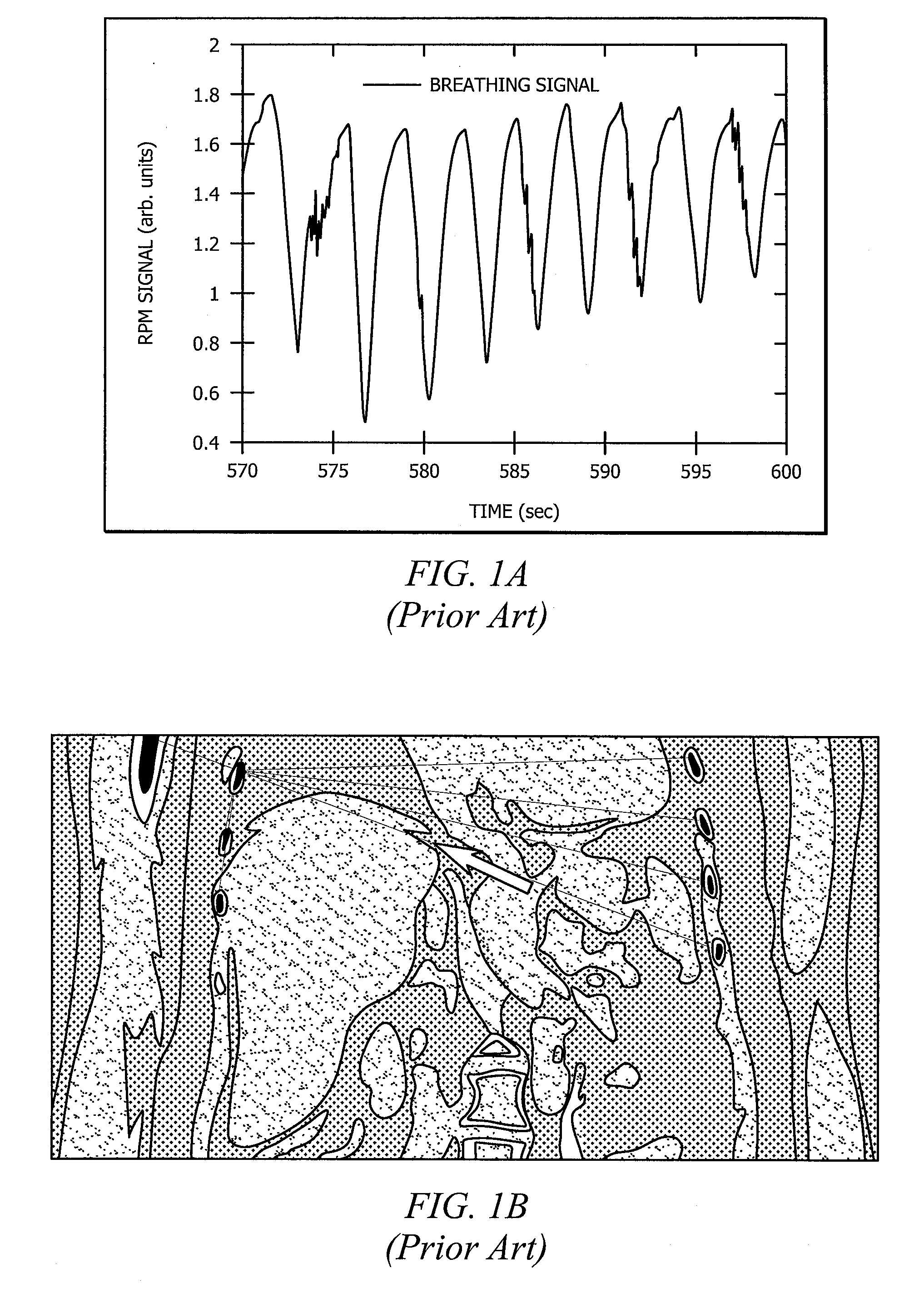Image reconstruction incorporating organ motion
a motion reconstruction and organ technology, applied in the field of reconstruction images, can solve the problems of invalid 2d motion models for imaging of the torso, inability to accurately reproduce rigid 2d motion models, etc., to achieve the effect of reducing motion artifacts, increasing the signal-to-noise ratio in the image being reconstructed, and reducing motion artifacts
- Summary
- Abstract
- Description
- Claims
- Application Information
AI Technical Summary
Benefits of technology
Problems solved by technology
Method used
Image
Examples
Embodiment Construction
[0033]Reference will now be made to the exemplary embodiments illustrated in the drawings, and specific language will be used herein to describe the same. It will nevertheless be understood that no limitation of the scope of the invention is thereby intended. Alterations and further modifications of the inventive features illustrated herein, and additional applications of the principles of the inventions as illustrated herein, which would occur to one skilled in the relevant art and having possession of this disclosure, are to be considered within the scope of the invention.
[0034]Directing attention to FIG. 2, an imaging system adapted according to an embodiment of the present invention is shown as imaging system 200. Imaging system 200 comprises processor based system 210 operatively coupled to transducer 220 for use in collecting imaging data with respect to subject 201. For example, subject 201 may comprise a patient for which imaging of a portion of the patient's body (e.g., hea...
PUM
 Login to View More
Login to View More Abstract
Description
Claims
Application Information
 Login to View More
Login to View More - R&D
- Intellectual Property
- Life Sciences
- Materials
- Tech Scout
- Unparalleled Data Quality
- Higher Quality Content
- 60% Fewer Hallucinations
Browse by: Latest US Patents, China's latest patents, Technical Efficacy Thesaurus, Application Domain, Technology Topic, Popular Technical Reports.
© 2025 PatSnap. All rights reserved.Legal|Privacy policy|Modern Slavery Act Transparency Statement|Sitemap|About US| Contact US: help@patsnap.com



